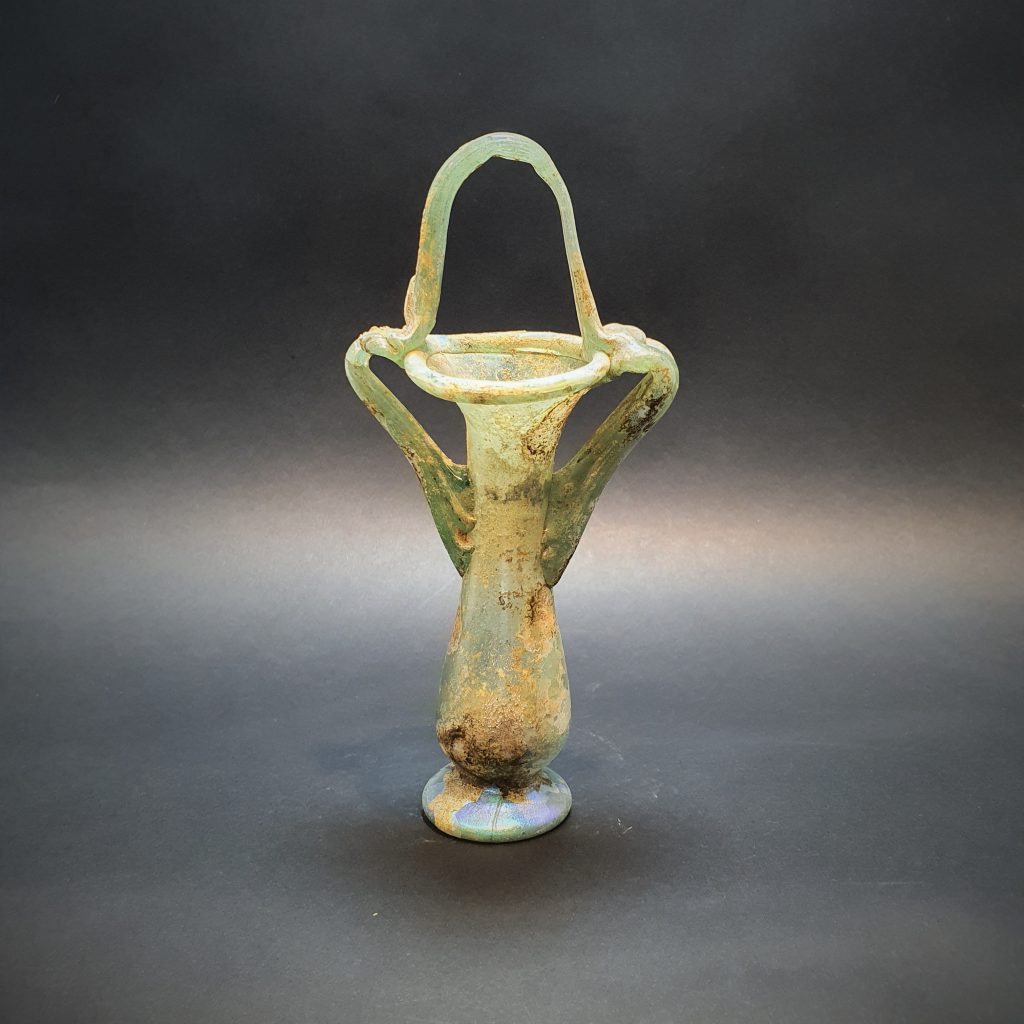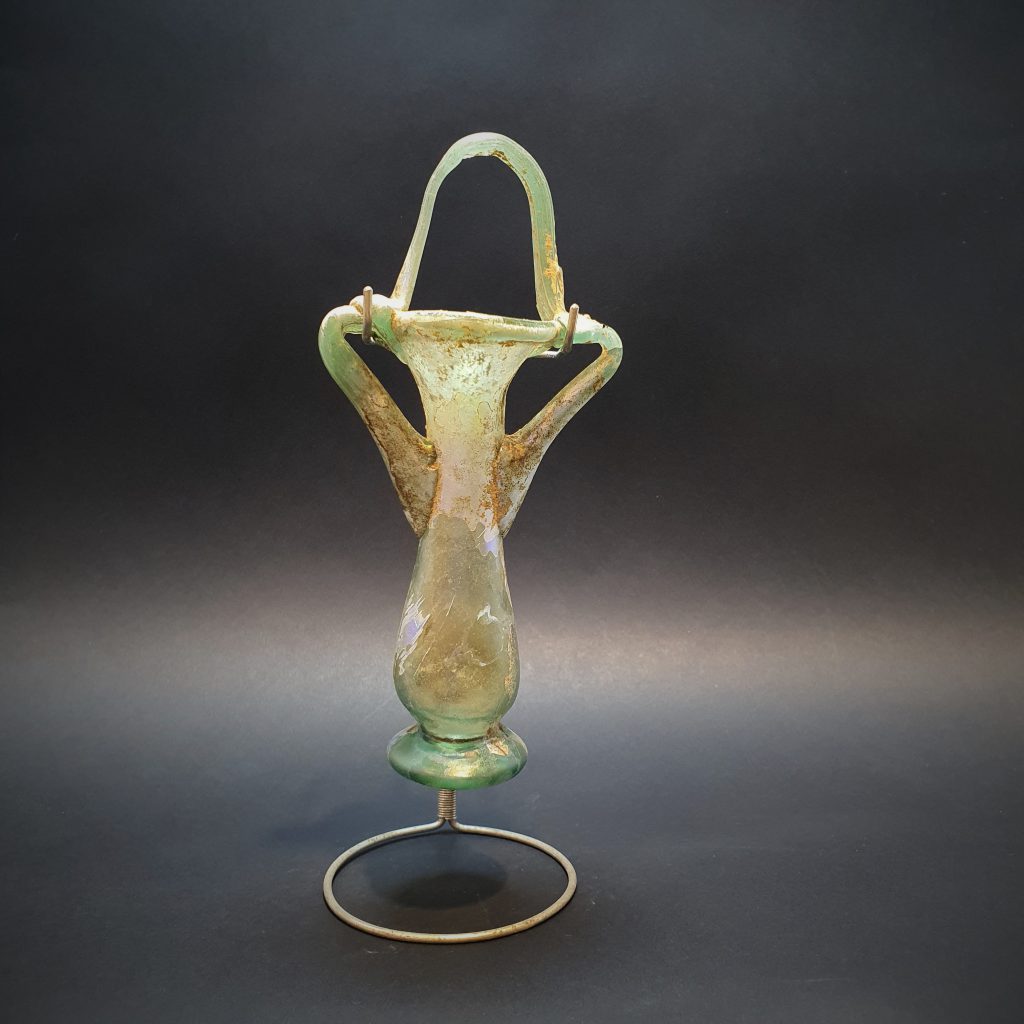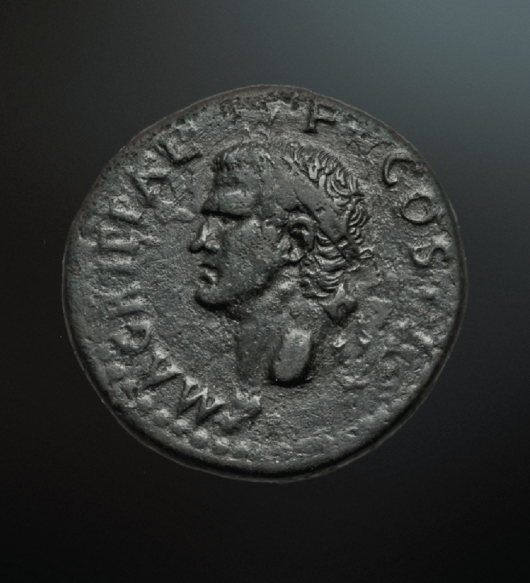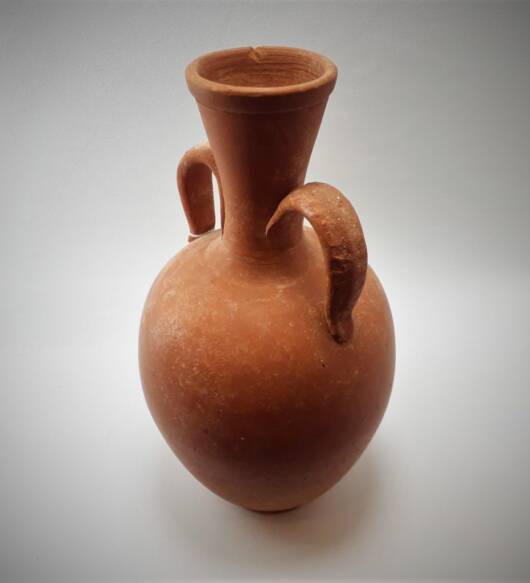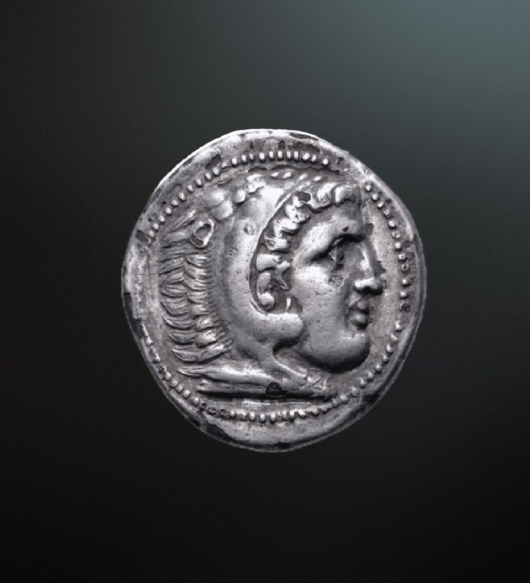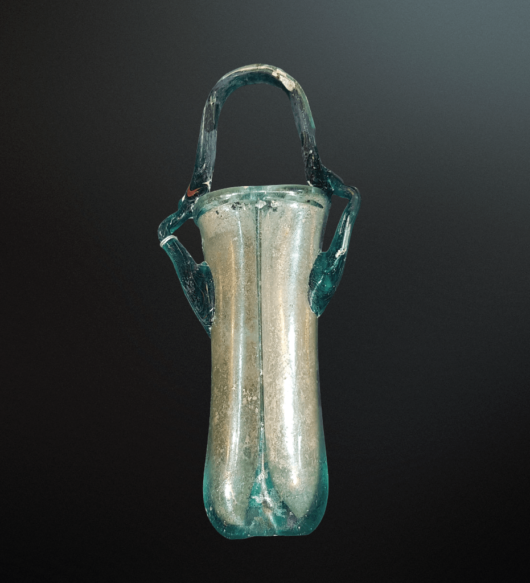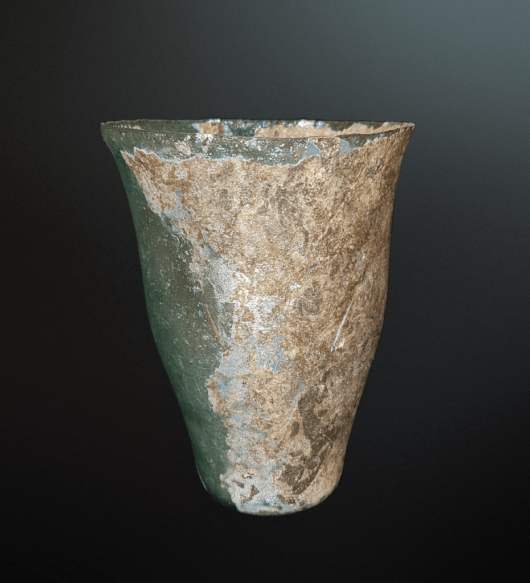Ancient Roman kohl tube Glass
SKU: UR.19.
Period: Roman Period.
Date: 3th-4th AD.
Condition: In very good condition intact and Rare.
Description
Description
Ancient Roman kohl tube Glass 3rd/4th AD, Blown.
Everted tubular rim, folded inward, elongated bag-shaped body, Two handles, raising from the body to the rim, drawn upward to form a basket handle, high pushed-in ring base
In very good condition intact and Rare.
The kohl tube is one of the most easily recognizable ancient glass vessels.
It was designed to hold kohl an eye makeup.
These special containers have been found mainly in tombs dating to the Byzantine period. Some were found with traces of the makeup preserved inside or, more frequently, with a small stick of bronze, glass, or bone, with one round end and the other in the shape of a tiny spoon the applicators used for applying the makeup to the eyelid.
The earliest type is the single kohl tube, which first appeared in the third century CE, continuing into the fourth century.
Rather carelessly manufactured, it usually has handles and stands upon a pushed-in base. Kohl containers of the fourth to sixth century CE consist of more than one tube (normally two), perhaps for different colors of makeup.
They were made from a bubble squeezed into two or more parallel tubes while the glass was still hot.
These vessels lack bases, and thus were probably suspended by their handles.
Most of the multiple kohl tubes are decorated with glass trails, wound spirally around the bubble before it was separated into tubes, or applied in loops to the sides of the body.
Over the course of The Byzantine period, the handles became increasingly ornate, lending the vessels a Strange and sometimes heavy, awkward appearance.
Kohl tubes have been found in abundance in Palestine, far more so than in neighboring
lands, and they may be considered a local type.
Noteworthy is a single-tubed kohi container from the end of the Byzantine period, distinguished by knobs at the bottom and by a complex handle arrangement on top.
Barag 1970, p. 175; Stern 1977, PP. 115-18
Ancient glass in the Israel museum, The Eliahu Dobkin collection and other gifts P.227.



